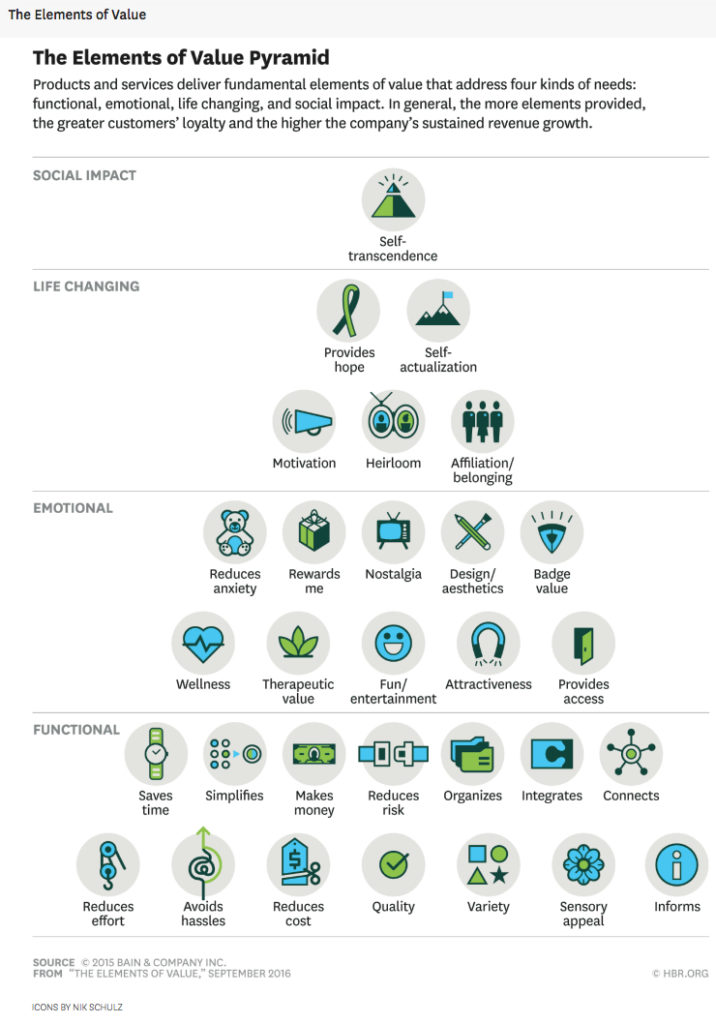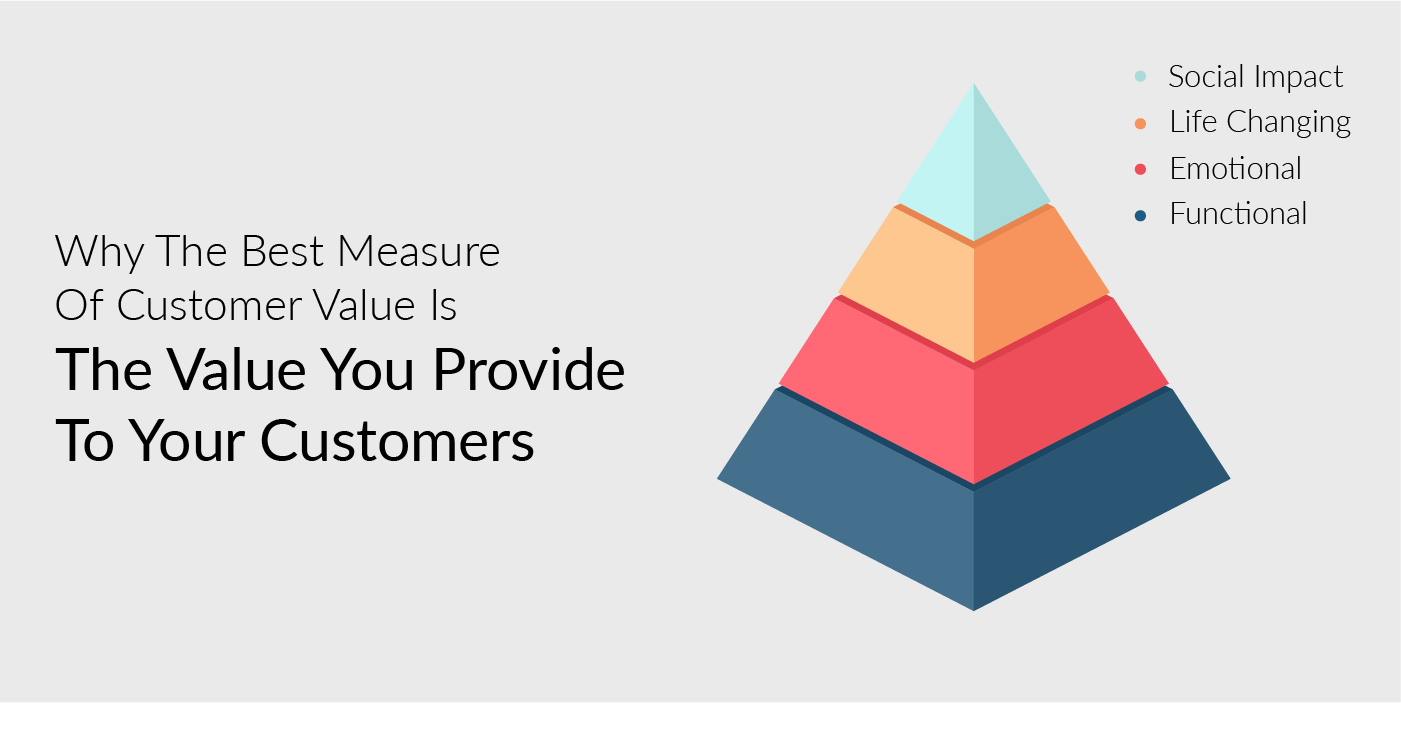It’s not easy trying to grow a business.
You’re often left standing in the middle of a saturated market, scratching your head and wondering “what can we really do to separate ourselves?”
Do you develop a new product, find a new market, or maybe pour money into advertising? When a company gets to this point, a lot of people overlook one key element in the equation; the customer. What is it that the customer wants?
The idea of “customer value” can mean a lot of different things to different people. For business people, it’s all about how much a customer is worth to the business.
But customers don’t care what they’re worth to you. They want value from you. That’s what keeps them coming back to you and referring you.
Customers don’t care what they’re worth to you. They care about the value they get from you
So how do you find out what value means to your customers?
Well, this is where the perspective of the business and the customer converge. When a customer or a company spends their hard earned money, each expects leverage in return. If an overworked couple spends money on a babysitter, they expect to go out and enjoy a stress-free night. If a logistics firm dishes out for new equipment, they expect to see a more reliable and efficient trucking fleet.
The Harvard Business Review recently put together a list of 30 things that customers really value. They fall into four categories: function, emotion, life changes, as well as social impact. At the base of the pyramid are functional needs. Reduce customer effort, help them avoid hassles, inform them better. Those are simple values that any company can provide.

But every company is unique, so customers seek different values from different companies, and it takes a design thinking approach to decipher what will work best for your company.
Reduce customer effort, avoid hassles, inform better. Values any company can provide.
A legendary example of this is Apple’s entrance into brick-and-mortar retail and all it took was one design insight to create a cascade of benefits. Apple realized that by putting their most experienced employees at the front of the store, they could provide a range of values for each and every customer.
These elite team members would know how to recognize situations, quickly vet customers, and efficiently route them through the store. They translate customer requests through an iPhone or iPad directly to another employee. By giving that employee knowledge of what that customer is looking for, the customer never has to repeat themselves.
This design hits so many of the building blocks on the value pyramid. They’re saving their customers time, simplifying and organizing their in-store experience, reducing effort and avoiding a hassle. By creating all those base values for their customers, Apple actually delivers elements from the upper echelons of the pyramid too.
Emotionally, this helps to reduce customer anxiety, which in turn boosts wellness. Furthermore, by letting the customers fully experience the products (i.e, using the Macbook Pro, listening to Beats by Dre headphones) they are creating a fun and attractive experience.
Think about it, when is the last time you saw an empty Apple store? It draws people in and keeps them coming back because it looks good, it’s fun and it’s stress-free. If there’s any complaint to be made, it’s that the stores are too popular.
Think about it, when is the last time you saw an empty Apple store?

Image Credit: Jordan Novet/VentureBeat
Now, virtually any company can create functional and emotional value if it digs deep into what its customers want, but Apple’s in the rarefied “life-changing” club. Take the example of a jr. programmer at a software development firm.
Upon hiring, they’re issued a cheap Windows OS laptop to do their work. But if they stick around, work hard, and prove themselves, the company rewards them with a new Macbook Pro. That puts them in an elite circle of experienced developers within their firm, and that’s motivating. That builds a sense of belonging and self-actualization. You get that Macbook Pro, and you know you’ve made it. It’s a symbol of success.
Some cynics might think, ‘well that’s Apple, that’s unrealistic’, but that just isn’t true. Every company has the potential to design its processes to deliver more value.
Every company has the potential to design its processes to deliver more value.
15 years ago, while I was working with IBM, I was brought onto the case of a struggling rust-belt manufacturing firm. They made a specialized product called a tapered roller bearing which is used on big-ticket items like tractors or locomotives. One of the things I learned from these guys as soon as I met them was that they really believed in entropy reduction. They wanted to get rid of entropy because engineering is all about keeping the energy flowing when you’re building a locomotive and running it down a track. It’s simple, the less friction, the more freely it can move, and the less gas you need to run it.
But they were having a really hard time growing because their perspective was engineering-based, not marketing- or operations-focused. My suggestion was that they apply the entropy principle to their business processes as well. I told them, “if you can make it easier to work with you, your customers will spread the word about you themselves.”
So we ended up changing the way they work with their customers. They stopped shipping 1,000 roller bearings in big pallets to one main loading dock. Instead, they started asking their customers how many of each type of roller bearing they wanted per unit, then delivered them to exactly where they needed them. They just simplified the process. So, if a locomotive needed eight types A roller bearings and five of type B, they would put all thirteen in a single package and deliver it to where the locomotive will be made. They even started to add extra cotter pins, because they found out that in the process of assembly, their customers would drop a cotter pin or two, and climbing out from under heavy equipment was frustrating. Adding the extra cotter pins made the assembly guys’ lives easier, and started a chain reaction of delight from the bottom up. Instead of worrying about how to increase sales through advertising or trying to cut costs, all they did was find a way to make their customers’ lives better.
If you can make it easier to work with you, your customers will spread the word about you themselves.
In my opinion, more businesses need to follow these examples. First, fully understand the value that the customers are looking for. Once they know that they can engineer their systems to deliver on it.
The best way to start is to include your customers’ measures in your own measures. Your customers will get a better outcome, better product, better service, better feelings and you’ll deliver more of what the customer wants at a lower cost. The bias of a lot of ROI and metrics is that “we’re doing great on our metrics” but that can sometimes leave out how the customer is feeling. If it’s not what the customer wants, then you could be going the wrong way in a hurry.
At the end of the day, it’s not about squeezing more money out of the client’s wallet, it’s about giving them what they want in the dimensions they deem important. Engineer your business to do it on purpose and by design. One of the biggest competitive advantages a company can have right now is to not depersonalize their customers by considering them as just numbers. Realize they are human beings with individual needs and values, and if you start doing what matters most to them, they’re going to shop with you again and again.





